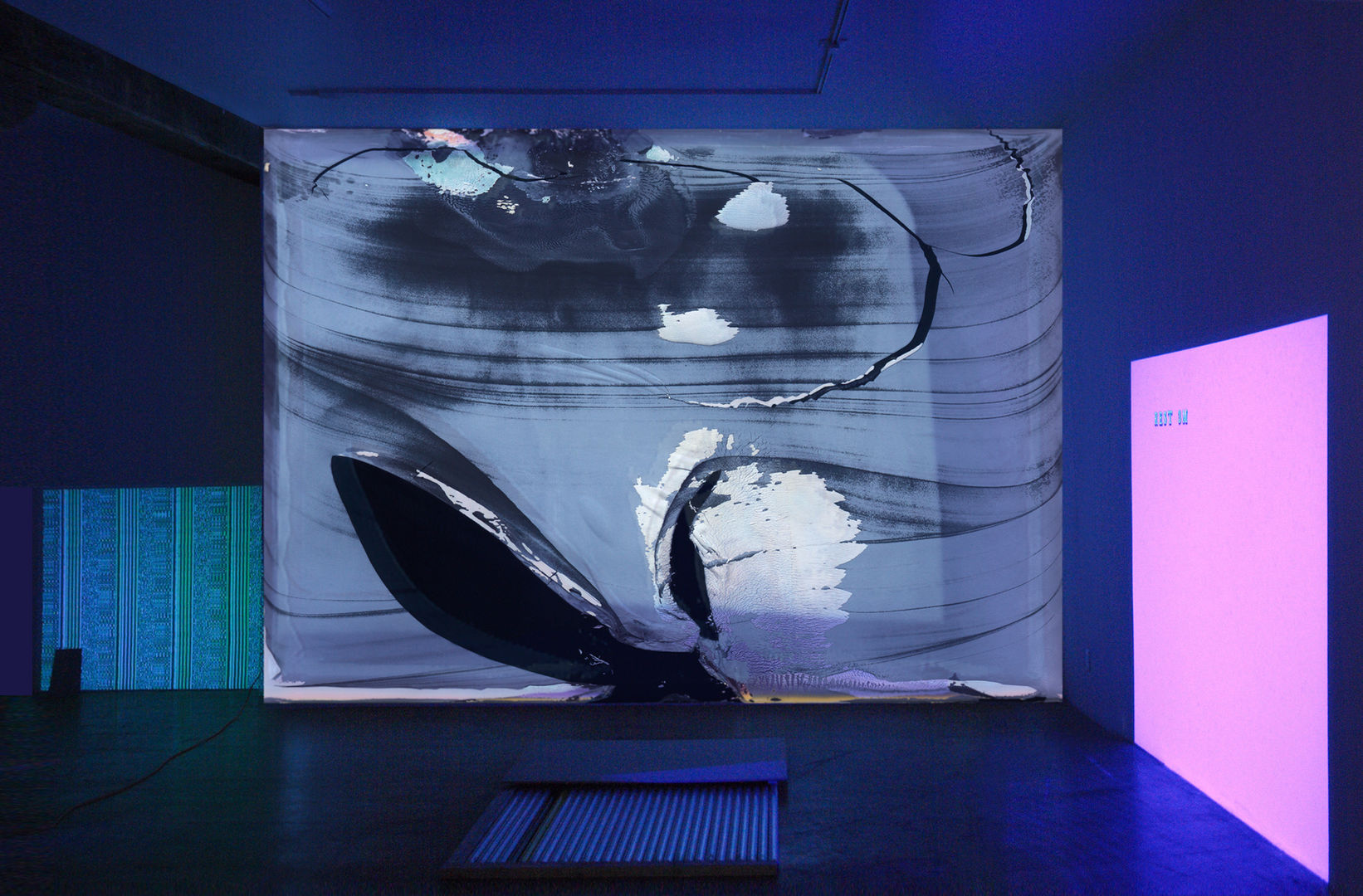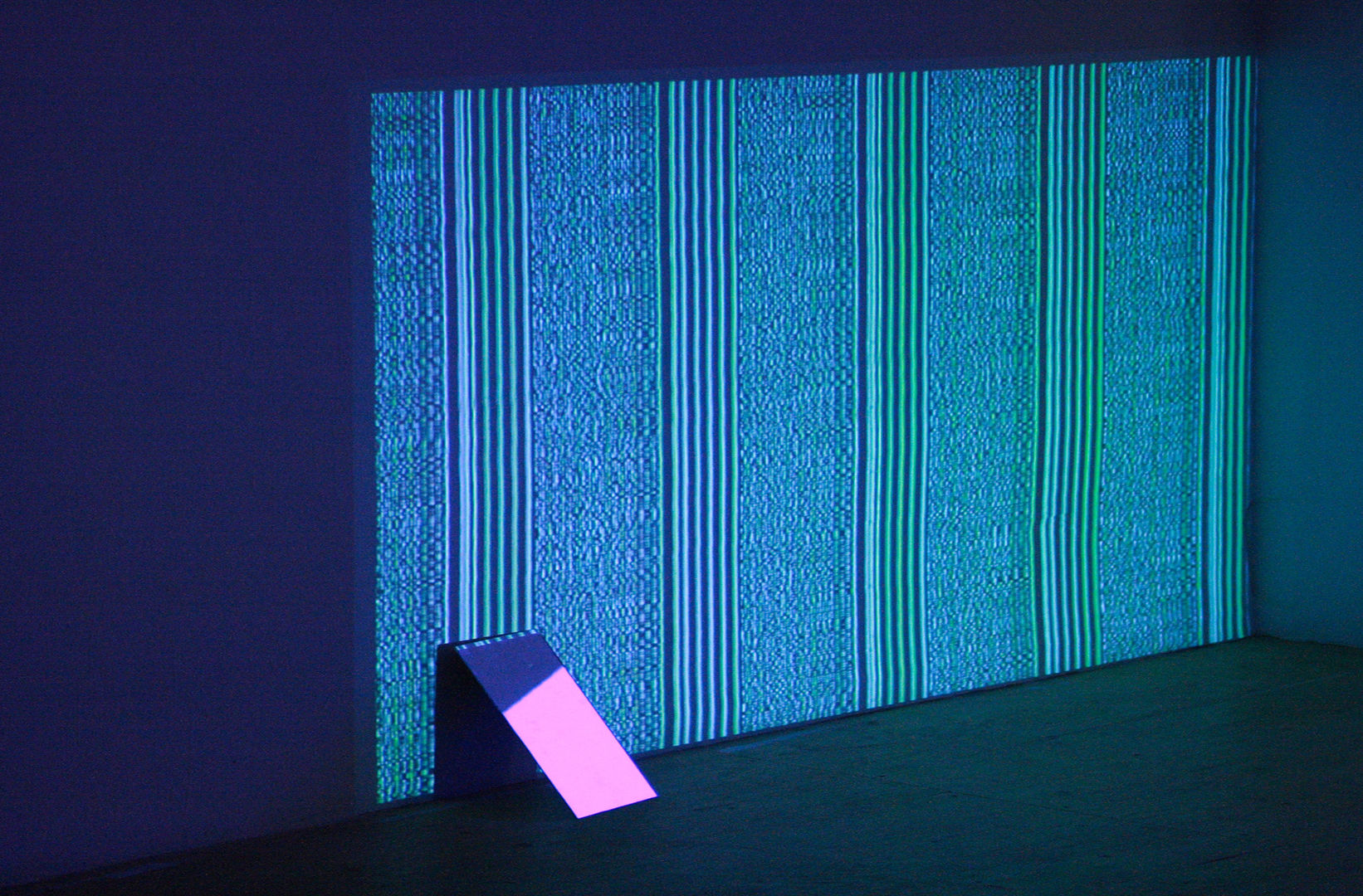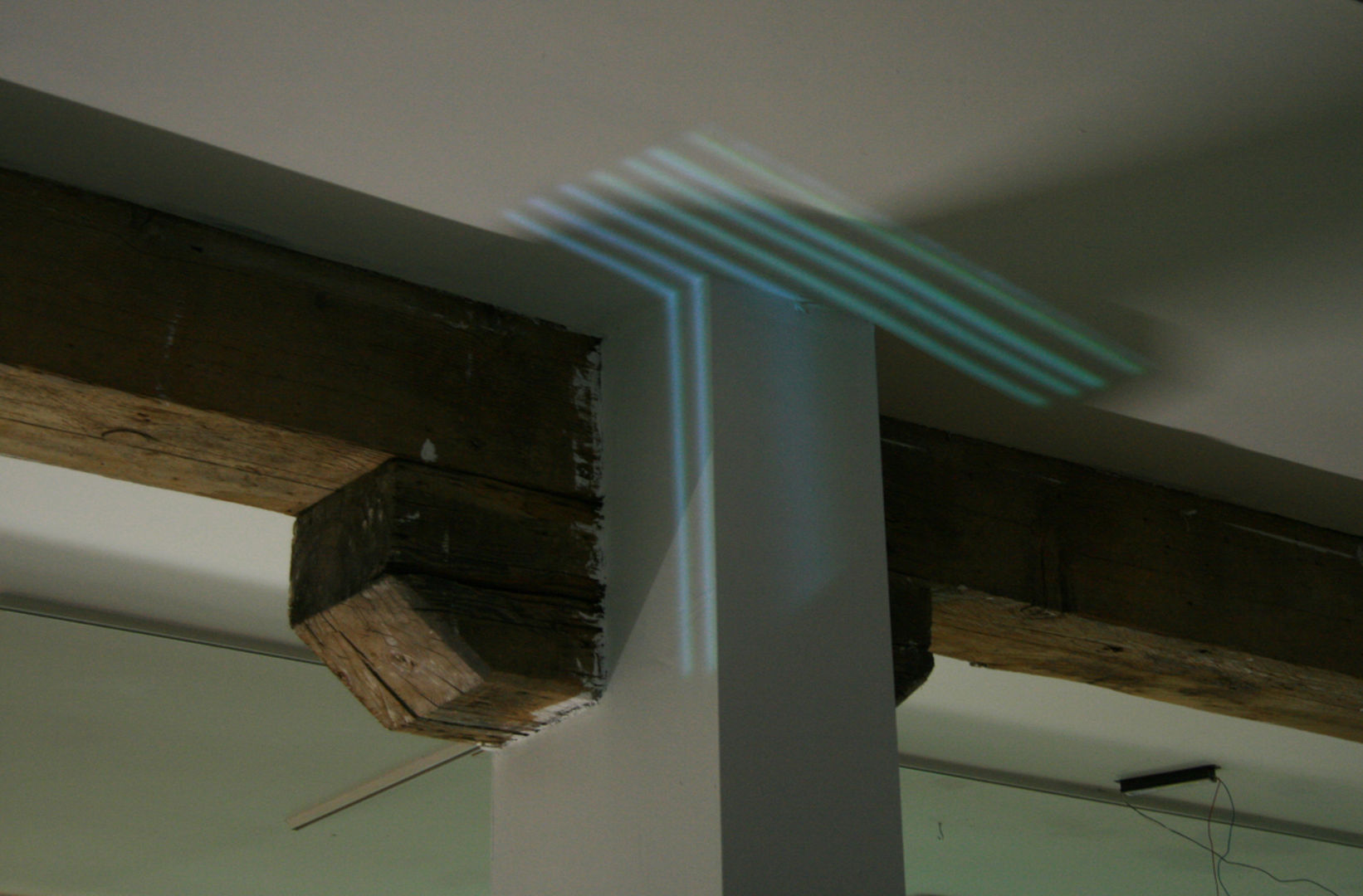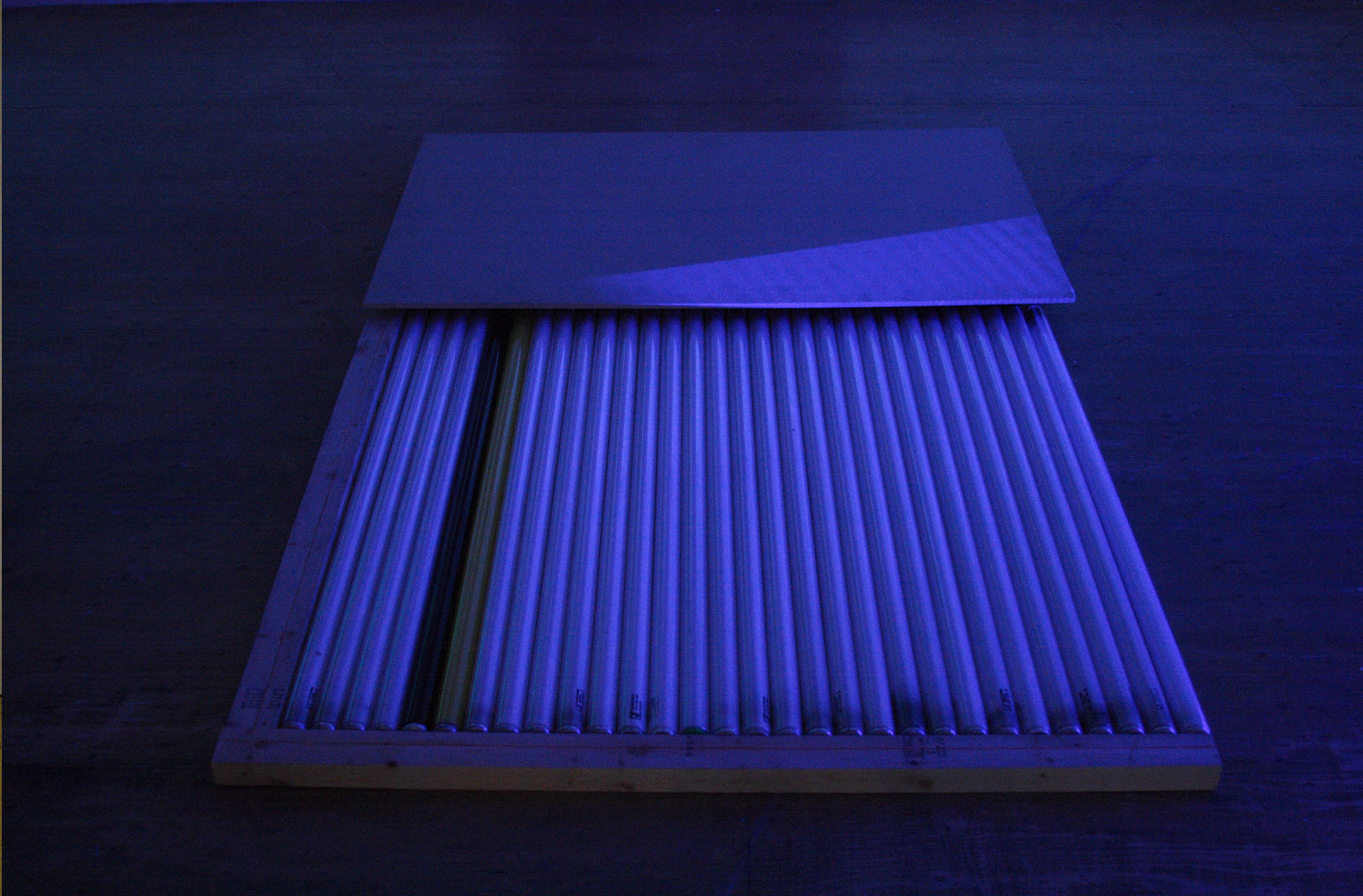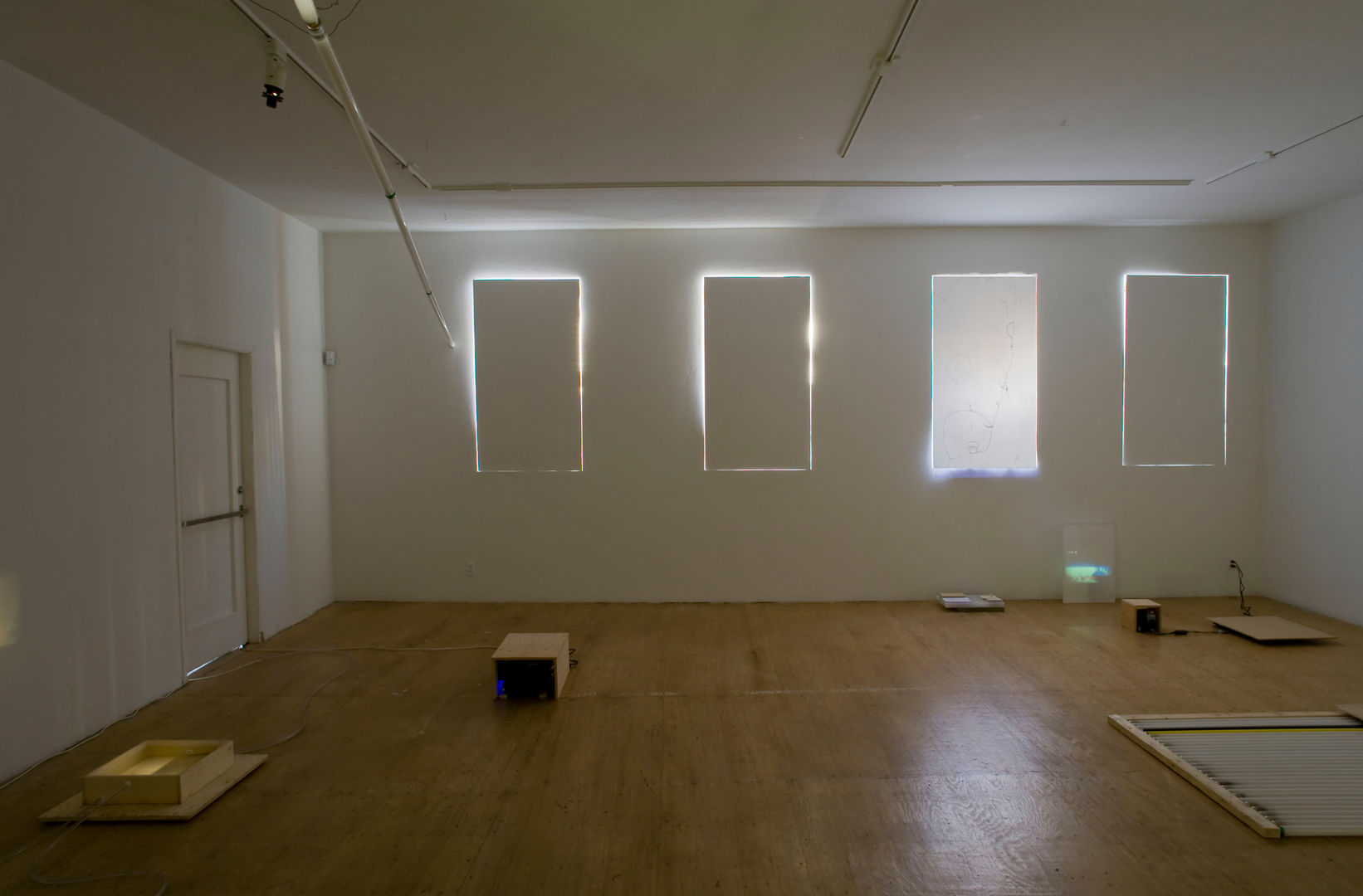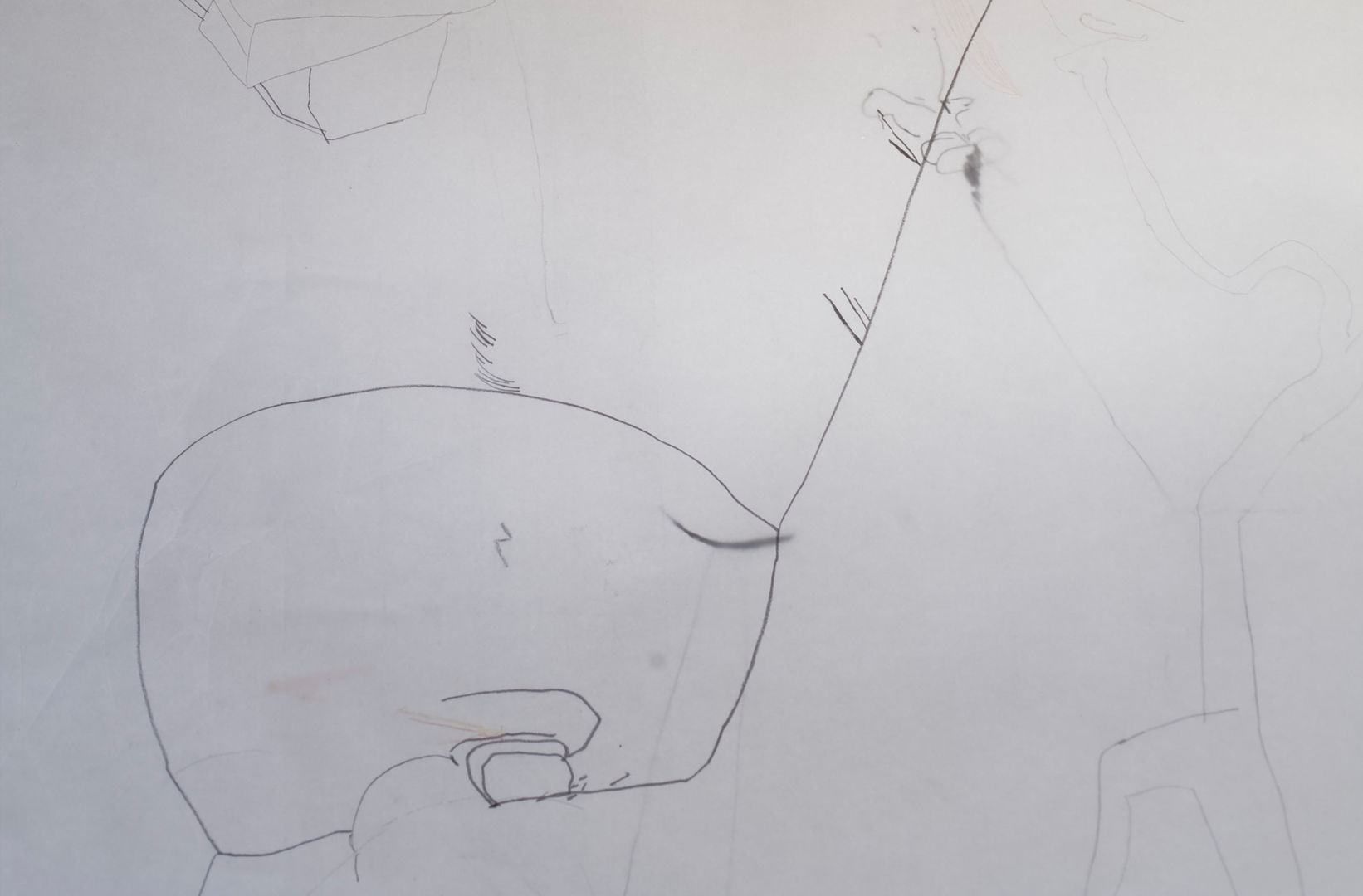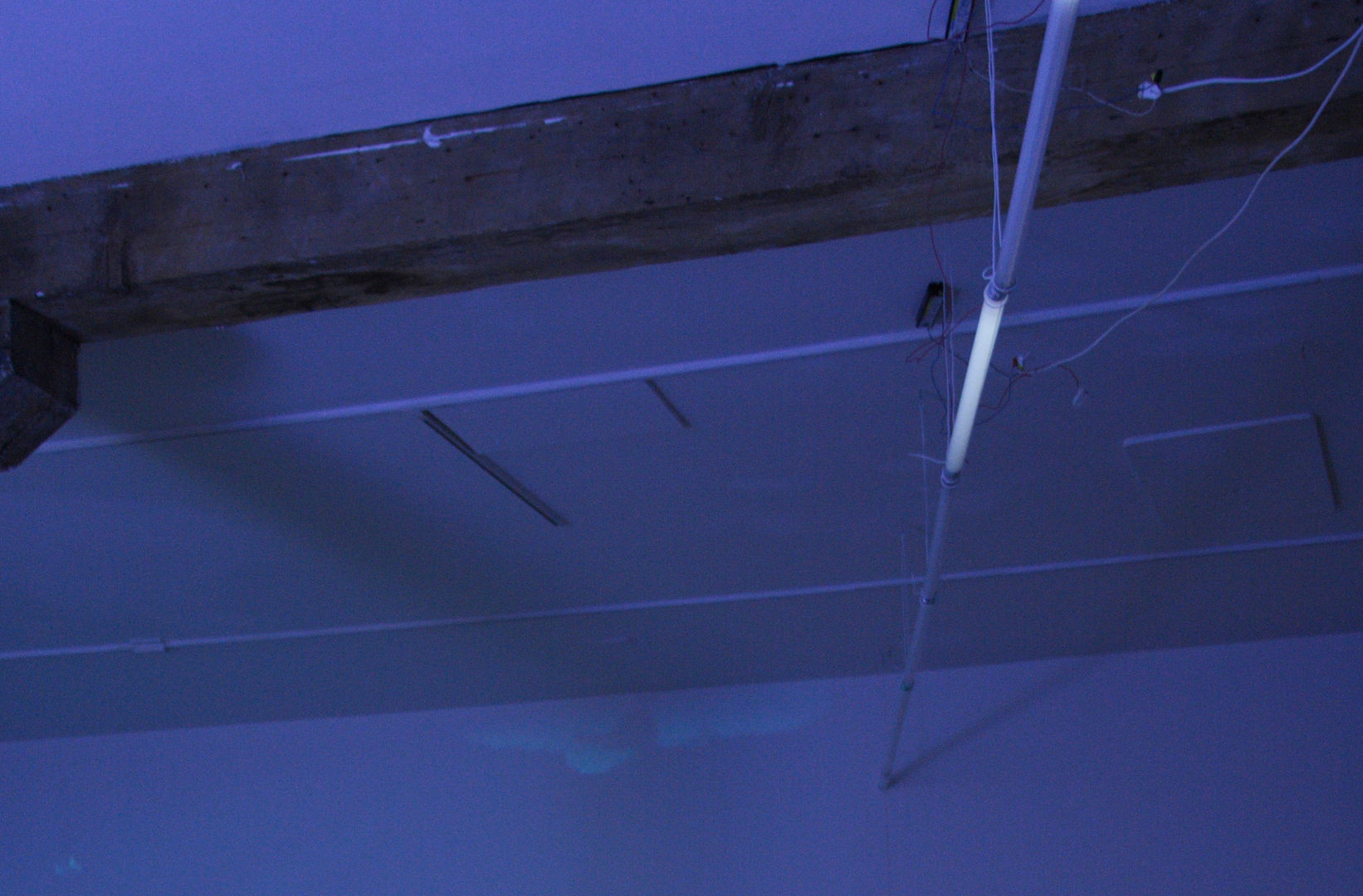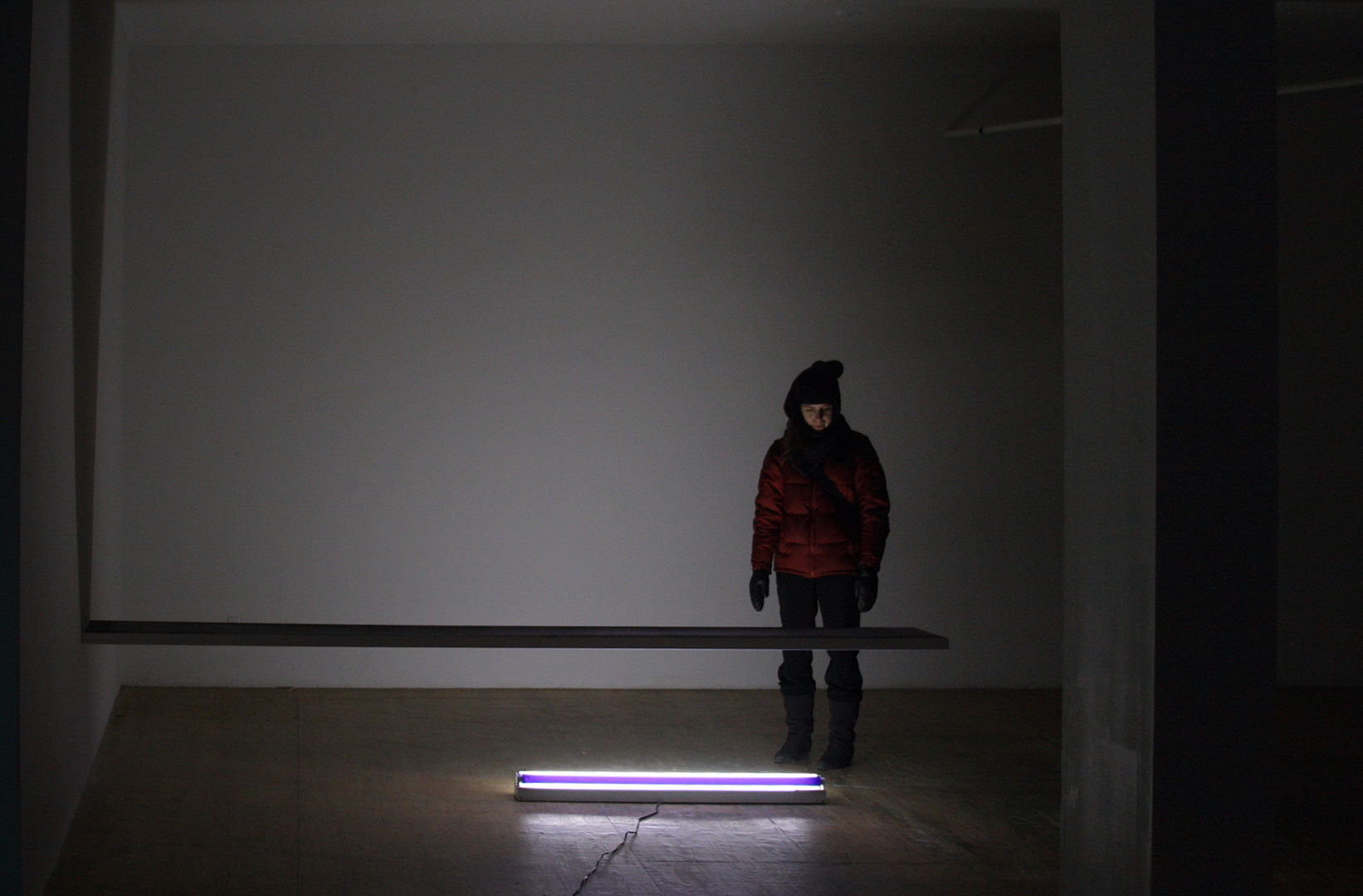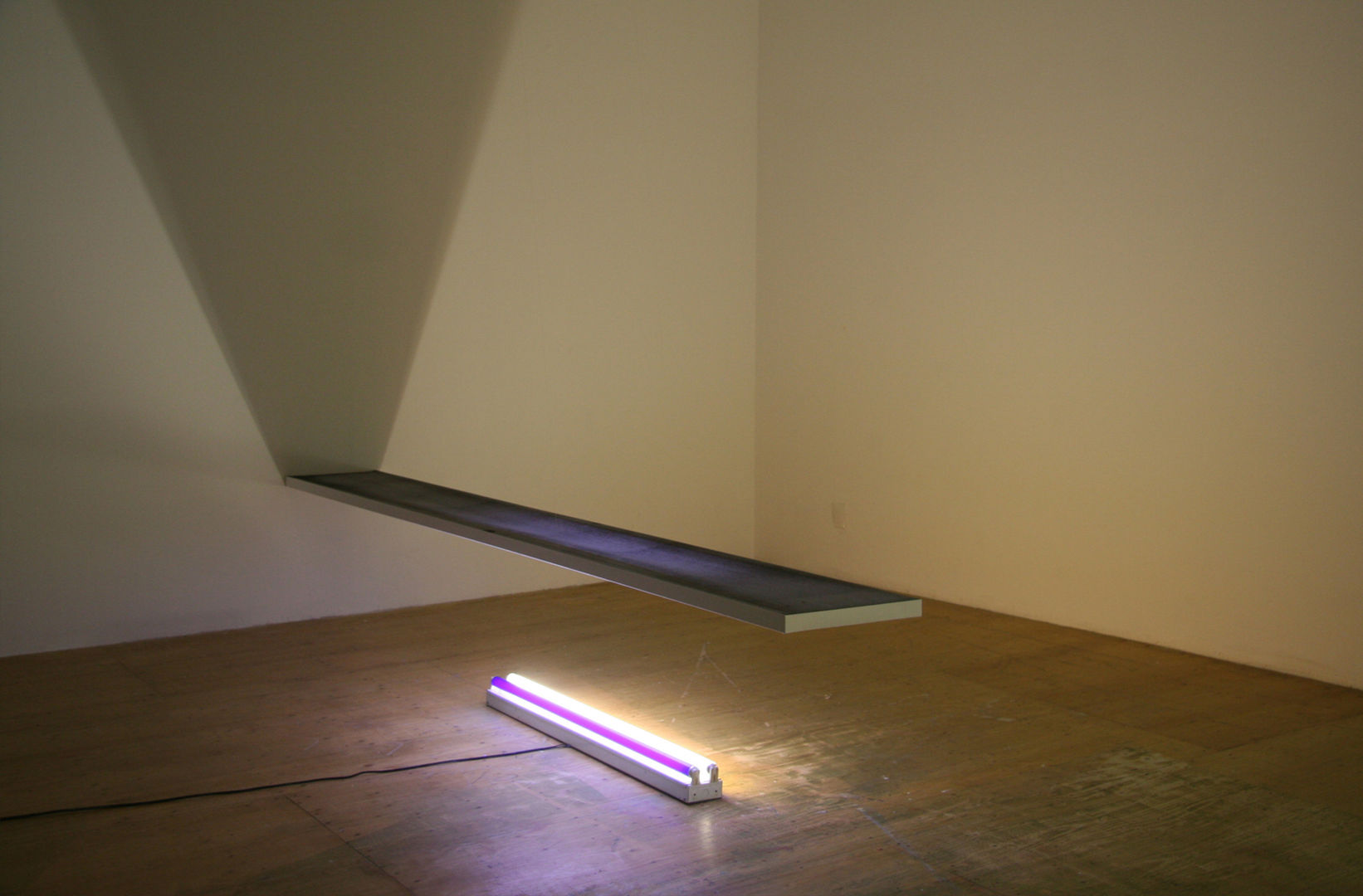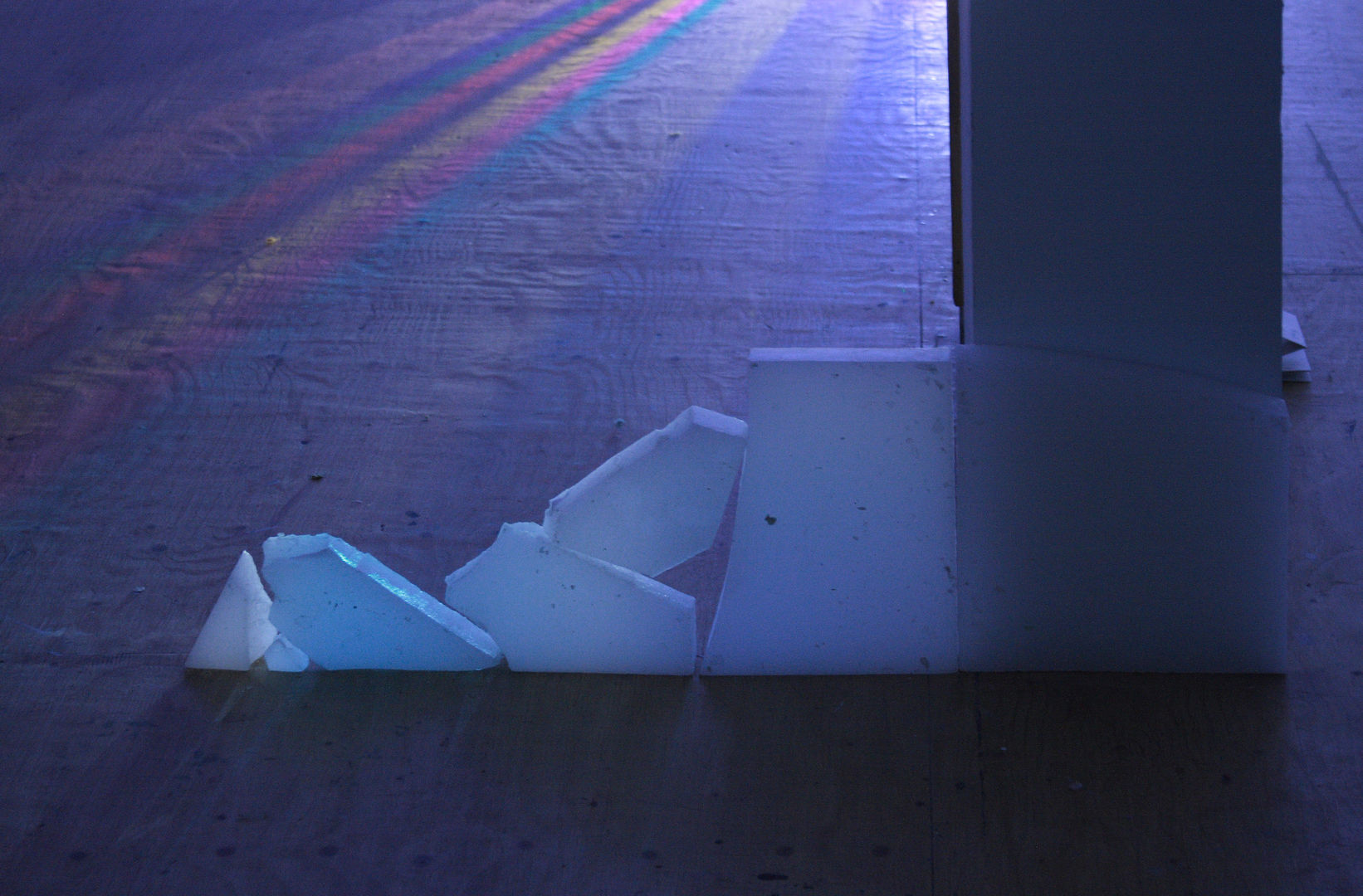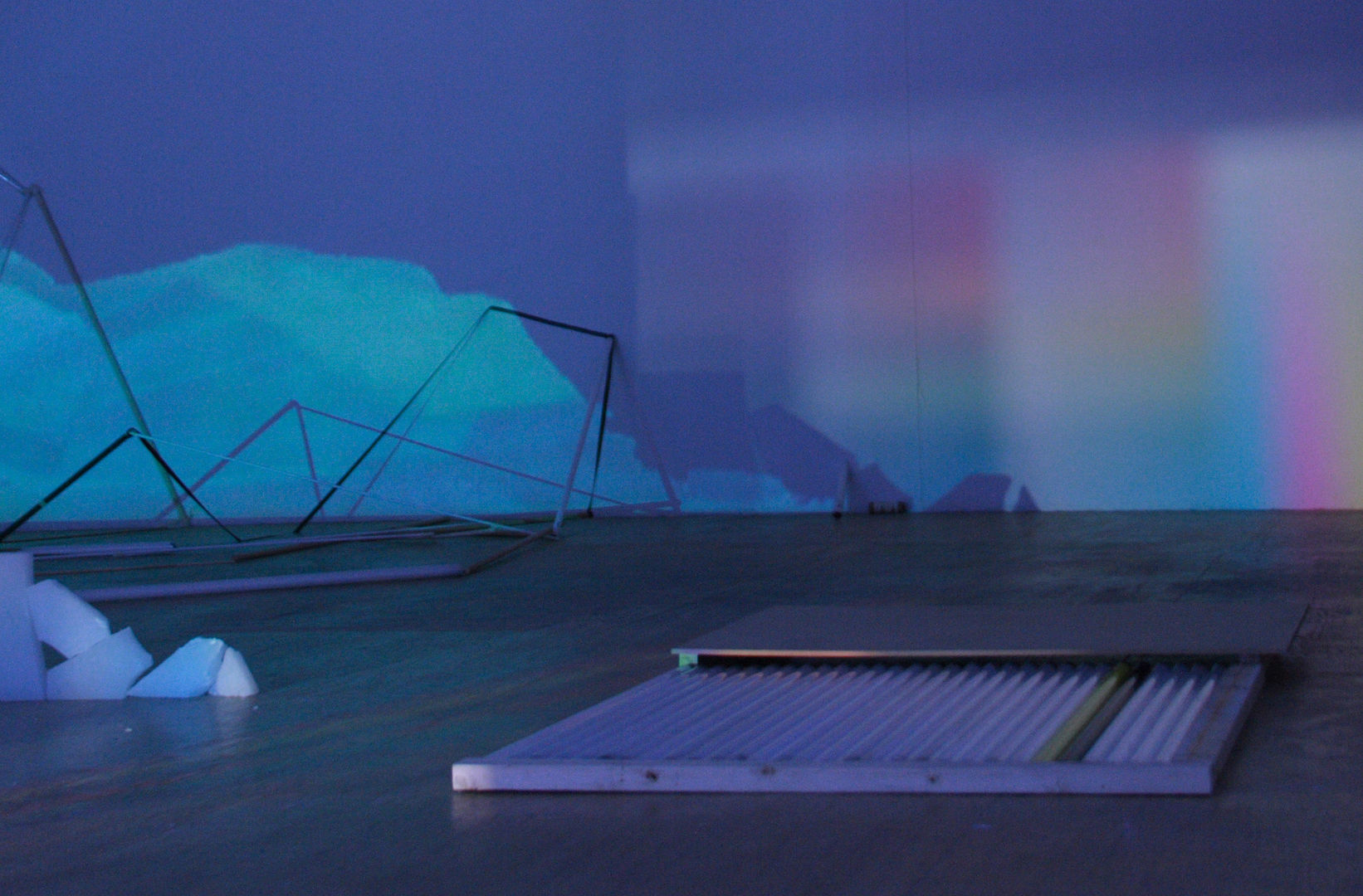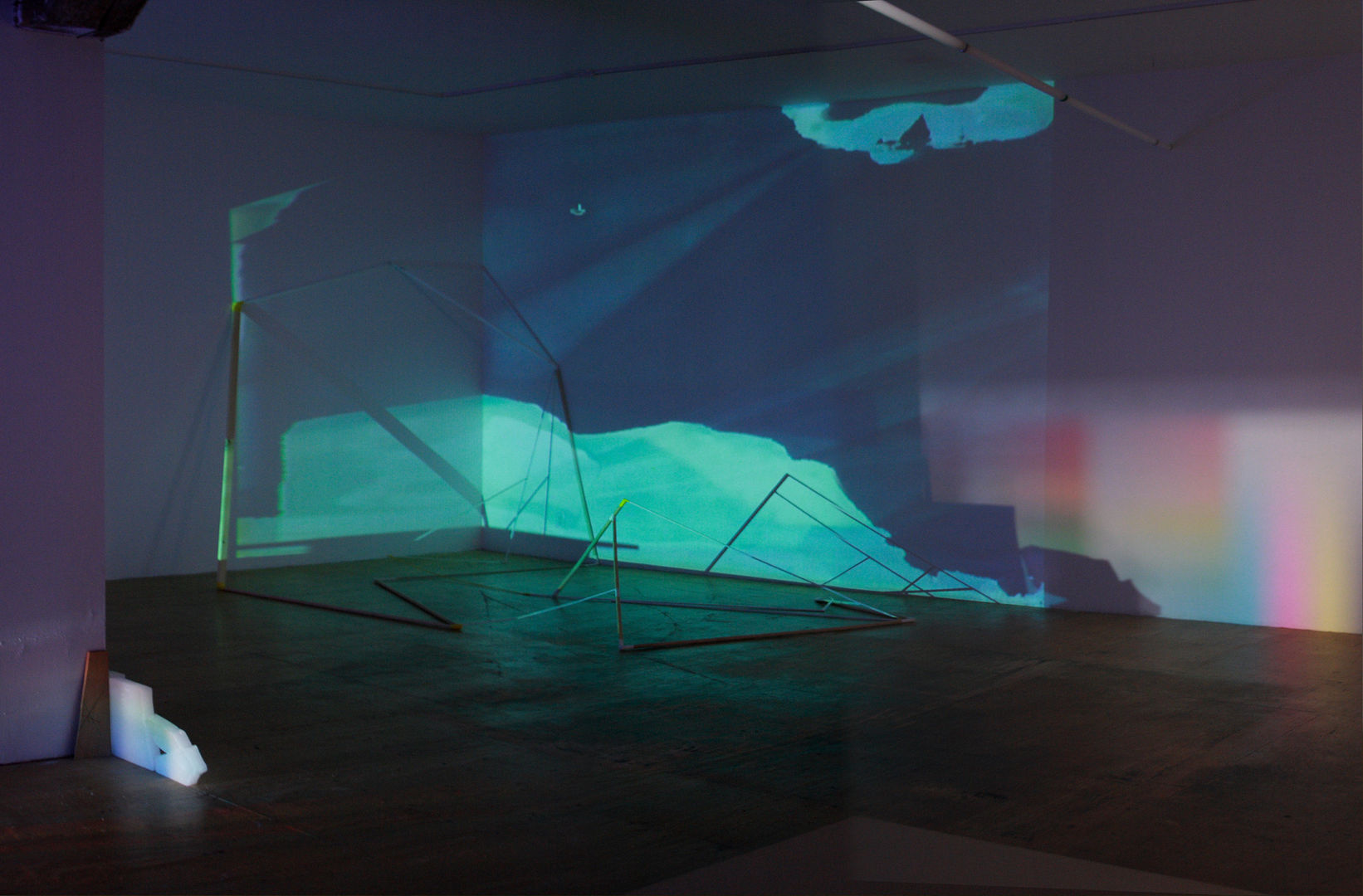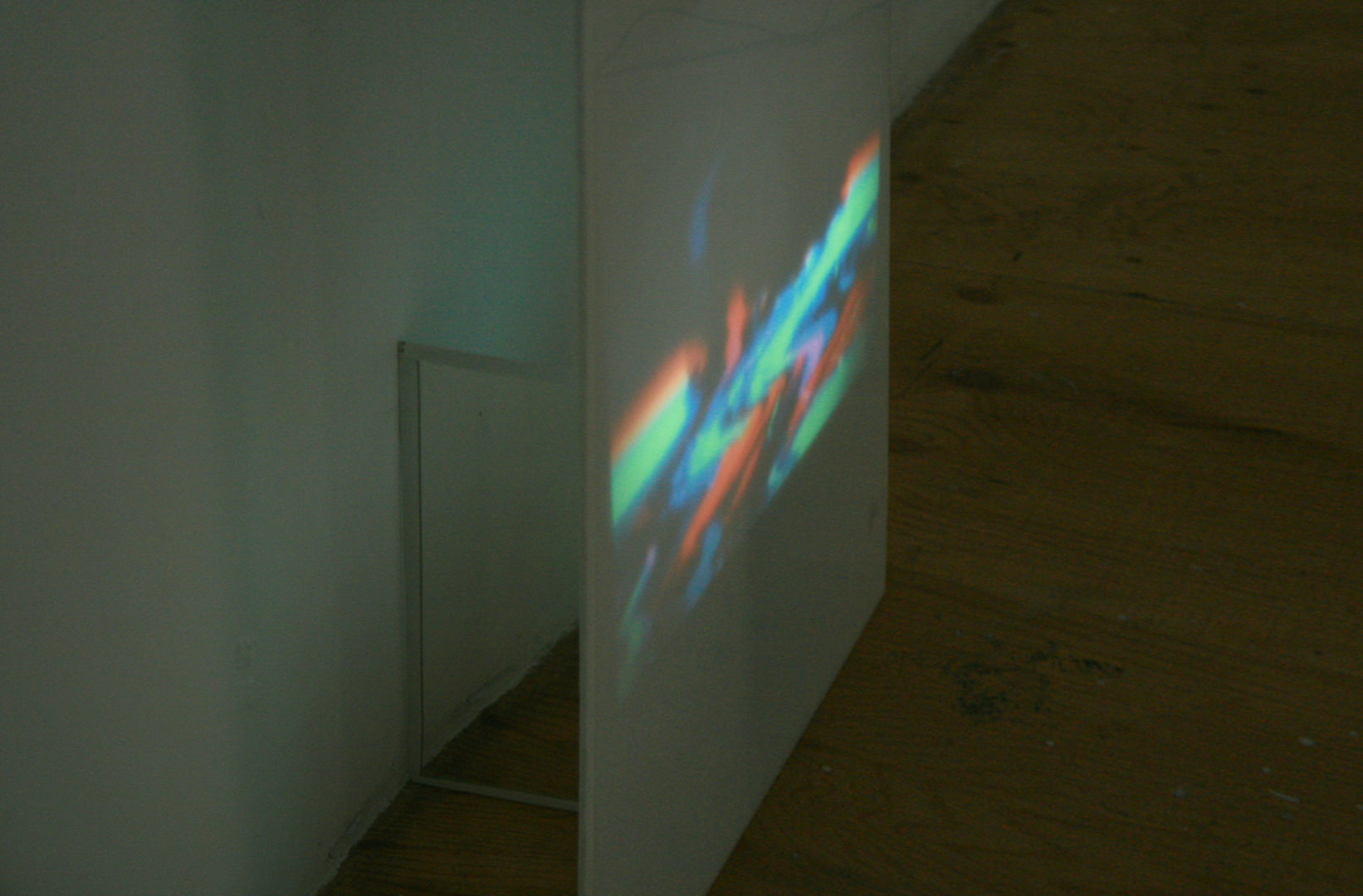DRAWING FIELD
La Chambre Blanche, Quebec 2009
In-situ and interrelated works acting as one overarching conceptual drawing work, circulating between water bodies - Saint-Laurent Rivers, Montmorency Falls, La Piscine St-Roch (Outdoor Swimming Pool), the gallery and studio as a water body.
'James Geurts' Drawing Field presented itself as a whole, a body in which water, air and light circulate. Within this body, traversed by energies, the works placed in the four corners of the gallery function as living organs that are interrelated, transforming the space into an evolving mass.
Throughout his residency, the artist invested La Chambre Blanche in its globality: he lived above the exhibition space and, through his impregnation of the site, rapidly established a connection between his room and the gallery space. He played with geographic separations, manifesting elements of his thinking, which filtered through the walls, floors and doorways. His installation coursed through the building, through the internal gallery spaces, and externally.
Another of the works in the gallery, placed directly opposite the basin, referred explicitly to the diving board in the Saint Roch pool. It consisted of a wooden board, covered with a photograph, which seemed to emerge from the wall and extend into the exhibition space. Suspended discretely in the space, the board was lit with a blue neon, accentuating the surrealist atmosphere of the object, and creating geometric shadows on the adjacent walls.
A luminous halo emanated from each of the works installed in the gallery, and as a whole, they created a distinct atmosphere.
Similarly to Dan Flavin, James Geurts uses neon light in an essential way, to create a strong sense of variations in luminosity, of dynamics that transform space. Mario Merz, who also often employed neons in his sculptures, explained how he created: "a very distinct perceptory experience that accords objects a tactility and a subtle auratique quality."2) This sensation was present in the works by James Geurts' at La Chambre Blanche: the use of light enabled him to accentuate the presence of certain elements of the installation, notably the drawings that he made whilst exploring Quebec City, which were transposed into the space.'
Excerpts from- Reflections of Quebec. Review by Anne-Lise Griffon Inter Actuel 103, Magazine, Edition Interventions Quebec 2009
2) Francoise Ducros, Mario Merz, Paris, Flammarion, 1999, p.170.
